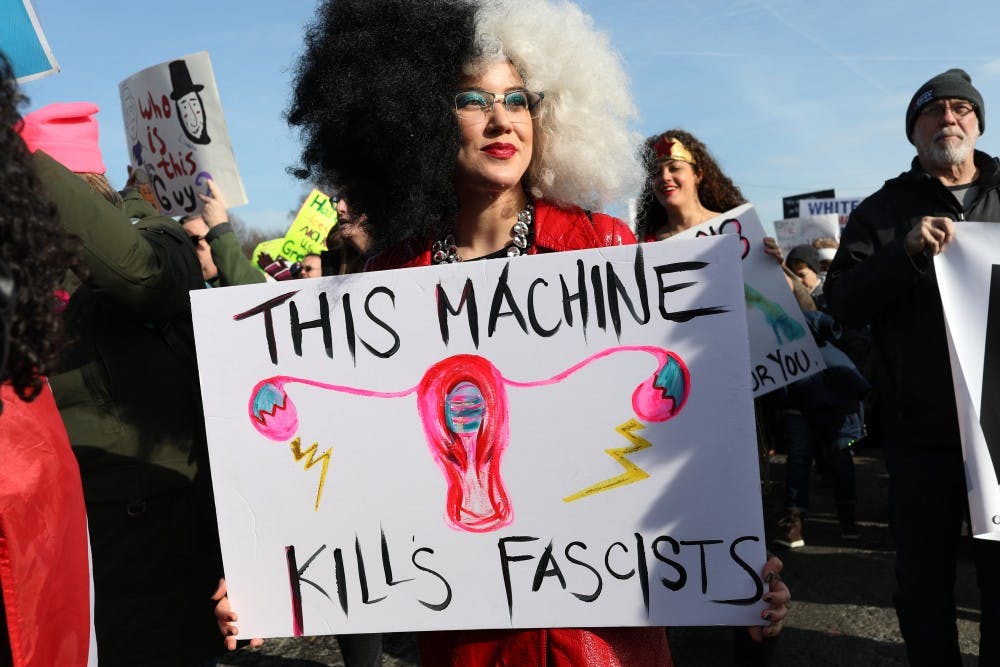Last January saw the single largest day of protest in U.S. history. The Women’s March boasted more than 4.5 million marchers all across the U.S. and the world. It was touted as a success.
But what makes a protest successful? Quick thought experiment; if that march had not taken place how different would our world be? What did the Women’s March accomplish?
This Saturday, in response to the shooting in Parkland, Florida, protesters at 10 a.m. will march down Sumter Street to the Statehouse as part of the March For Our Lives. According to the website they “demand that a comprehensive and effective bill be immediately brought before Congress to address these gun issues."
What is the sequence of events that causes a protest to convince a legislator to bring a bill to the floor? Do we expect Marco Rubio or Tim Scott's hearts to grow three times in size after seeing protesters joining hands? Will they feel threatened by people who weren't going to vote for them anyway? If those in power were actually receptive to the public, we wouldn’t need to protest in the first place.
Obviously, a march does not change minds. People are rarely persuaded by debate, let alone hashtags on poster boards. The implicit goals of most marches are to make a show of strength, get news coverage and network. Mass demonstrations can work for bringing underrepresented issues to light and as pretense for further protest. But it’s a problem if thousands or millions of people can organize together only to manage to prove they exist.
When these movements do manage to capture our attention, they fail to communicate a clear and focused message. The Women’s March championed every social cause under the sun, muddling its message. What exactly was the March For Science marching for? Science? Modern protests lack clear, actionable and measurable objectives. How do you know if a protest is successful?
This lack of clear goals and motives stems from a lack of prominent, centralized leadership. Protests have organizers, but they don’t have leaders that a person in or outside the movement can identify. Any organization needs leadership to direct its movement’s messages and objectives. An organized, dedicated and trained few are more effective than an aimless mass screaming into the wind.
Without this organization you run the risk of having a reporter pluck aside a random joe who’ll misrepresent your movement or catch them throwing a rock through a window. Think back to Occupy Wall Street. No clear leaders, no clear goals, no clear results. If you can’t control what your movement stands for, others will.
Modern activists seem obsessed with generating news coverage as if that alone will bring change. They focus on quantity instead of quality, trying to convince as many people as possible to sacrifice as little as possible, tweet a hashtag, call a senator, go home and fall into self-congratulatory complacency.
At some point we need to move away from “raising awareness” and “starting conversations.” Protesting is typically synonymous with picketing and marching but those aren’t the only forms of nonviolent protests.
The NRA doesn’t hold marches. They have an app that’s turned civic engagement into a game. They have lobbyists with millions of dollars behind them. They had litigators arguing to reinterpret the Second Amendment. But they don’t march.
Non-violent protests can be a little coercive. Those in power don’t change their mind after being asked politely. One has to identify where they draw their power from and knock away their support structures. The boycott of NRA partners is a good start and good example. Changing stubborn forces means bringing them to their knees and leaving them unable to function until your demands are met. Identifying how to best bring down an oppressor takes creativity but can be taught.
Marching by itself will not change anything. Millions of people could be a catalyst for change, but recent marches have just served as catharsis. If you plan to attend the March For Our Lives this Saturday starting at Calhoun Street and Sumter Street at 10 a.m., please prove me wrong. Don’t let me dissuade you from action, but make this time be different.

